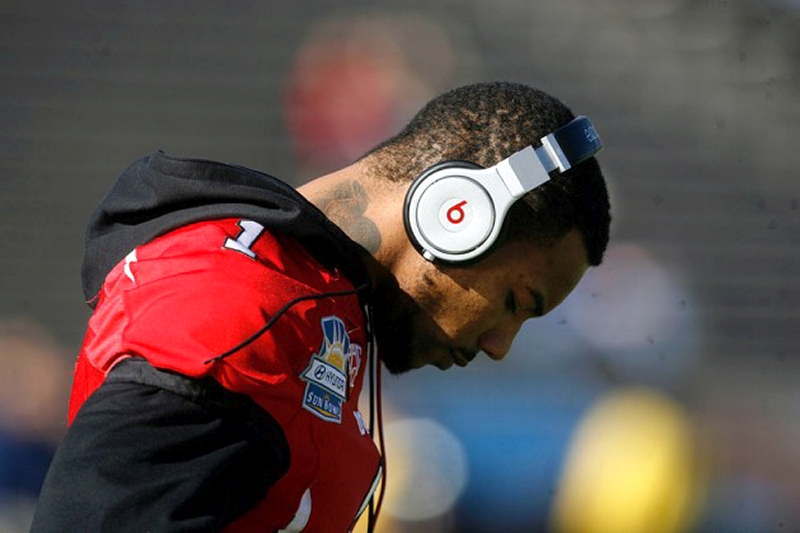You are viewing 1 of your 1 free articles. For unlimited access take a risk-free trial
Sports psychology: train your mind to take control

Endurance performance is mentally tough; the best athletes can push themselves to sustain physical fatigue and remain psychologically positive over long distances and durations. But according to PP contributor Andy Lane, this doesn’t happen by chance; endurance athletes can train the mind to develop emotional control
Emotional control is a skill needed to cope with the stress of competition but the good news is that you can work to improve it. Focusing on emotional control can and will lead to improved performance. And while it can’t transform the proverbial carthorse into a racehorse, it can make both go quicker.I will outline the concept of mood profile and suggest ways in which athletes can use this knowledge to improve performance. Finally, I will put the development of emotional control into the
specific context of preparing for the Marathon des Sables, a six-day event that involves distances of approximately a marathon per day and is ranked as one of the toughest endurance events in the world. The event also involves coping with searing heat, extreme foot blisters, huge sand dunes and having to carry your own supplies – not for the faint-hearted.
What research has been carried out?
At the University of Wolverhampton, we have done a great deal of research on psychological states in relation to endurance performance. We’ve studied anxiety and self-confidence in duathletes (1) and triathletes (2) and also studied emotional states before and after marathon races (3, 4).
Our recent work has looked at emotional states before, during and after competition. We have looked at changes in emotions during four-hour and two-hour bouts of intense cycling (5,6). We also looked at emotions before and at the worst point of the race during the London Marathon (7).
Our latest work has looked at changes in moods and emotions during the course of the Marathon of Britain, a foot race covering a route of approximately 175 miles held in set stages over six days (8). We have also looked at mood state changes during a 44-day solo expedition to the South Pole(8). These studies provide a large data set on which to draw and make recommendations for endurance athletes.
Trends
An analysis of the results of these studies shows several trends. First, it is normal to experience intense emotions before competition. Many athletes feel very anxious and most feel some degree of anxiety. Anxiety can be related to inadequate race preparation, setting a goal that is beyond your ability or perceiving the course to be overly difficult. Rarely do athletes get all of these things right and they should expect to feel anxious before each run.
However, they should try to interpret these feelings to mean that they are excited; sport performance is by its very nature uncertain, and even the most confident athletes still have a degree of anticipation regarding how things will turn out. It is possible to feel anxious but to interpret these feelings in a motivational way as being ready to perform. Anxiety can be a good thing.
The second trend is that athletes experience a mixture of emotional states during bouts of long, intense exercise. Runners should expect to feel fatigued. Athletes who cope successfully with endurance performance tend to feel fatigue and happiness simultaneously, whereas athletes who do not cope very well tend to feel fatigued, depressed and angry at the same time.
To illustrate these profiles, we collected data from the 2004 London Marathon. It is noteworthy that there are no differences in fatigue between two runners but the successful runner reports feeling fatigued, vigorous and happy.
A case study of a female explorer completing an expedition to the South Pole showed that vigour and fatigue fluctuate during repeated bouts of hard exercise; the key message is that endurance athletes should expect to feel intense fatigue and learn strategies to cope.
The third trend is that psychological toughness is built on a firm platform of physical fitness. To enjoy repeated bouts of hard exercise during competition you need to have experienced repeated bouts of fatigue that follow long-duration exercise in training. In the same way you train your body to cope with the demands of training, you also train your mind to think positively about the experience.
Developing emotional control
Task 1: learning to recognise your emotional profile associated with success
We all have experienced intense emotions before important events. Some athletes can channel these feelings to enhance performance; some can regulate these feelings and reduce anxiety, while others become debilitated by anxiety.
Using an example of three athletes, the first feeling excited and calm, the second anxious and excited, and the third anxious and downhearted, athletes 1 and 2 should perform successfully whereas athlete 3 will probably perform poorly.
Athlete 1 is an emotional profile typified by feeling vigorous, lively and alert, and in control. This athlete has regulated negative and unpleasant emotions. It is a profile often associated with supreme self-confidence and the perception that all challenges can be attained.
Athlete 2 shows a different emotional profile associated with success. In contrast to athlete 1, athlete 2 has a profile depicted by feeling vigorous, tense and angry. Athlete 2 will use feelings of tension and anger to aid motivation. For athlete 2, feeling tense can be like a warning signal – ‘I am about to try to achieve an important goal, and unless I work really hard, I will not achieve my goal’.
Athlete 3 is a different story. This athlete feels anxious, angry, downhearted and depressed. These emotions are likely to interfere with performance. Feeling tense might make you want to try harder but when it is combined with feeling depressed, it can make you feel like giving up. Our research has found that feeling downhearted and depressed is possibly the most damaging emotion to experience before and during competition. When athletes feel depressed, angry and fatigued at the same time they tend to turn anger inwards to self-blame and implode; poor performance is likely.
Task 2: assessing your emotional profile
I ask athletes to complete self-report scales before training sessions and before competition. I also ask them to rate whether they achieved their goals. Emotional responses occur in all of these situations and knowing how emotions change can be extremely useful in understanding how behaviour can change. You should assess your emotional profile before a number of different performances; something that can be done by completing an emotion scale shortly before competition or a training session(4). After competing, you should rate whether you performed to expectation or underperformed.
Performance should be rated in relation to your own expectations and your own goals. You will need around five successful and five unsuccessful performances before you can gather trends. Obviously, this is not always possible to do as you might be having a run of good form where most sessions/races are successful.
One way to get started is to think back to some of your recent performances and rate how you felt before a few races where you performed well (in relation to your own expectations) and a few races where you performed poorly (again in relation to your own expectations). Once you have a profile associated with successful and unsuccessful performance, a psychological skills programme can be tailored for your specific needs.
Assessment questionnaire
We assess emotions using self-report methods, typically a questionnaire. Of course, there are limitations with such an approach, as accuracy requires honesty. However, I would argue that there is not a better method available. A valid assessment of emotion necessarily requires access into thoughts and feelings.
It’s true that we can make hormonal measurements (eg adrenaline) to infer emotions, and also that these hormones are detectable in emotions such as anxiety, anger and excitement. However, a limitation with this approach is that the physiology of emotional states such as vigour or excitement is similar to other high activation states such as anxiety and anger.
The only way to validate a physiological measure of anxiety or vigour is to compare it against a self-report measure; that is, to ask someone whether they were angry, anxious or excited.
It’s important to know your emotional states associated with success and failure. Once you’ve identified the factors linked with poor performance, you can begin to develop a strategy to combat these factors.
Task 3: visualising success
One strategy for developing emotional control is to use imagery. Imagery is effective because it can be used to replay situations. The emotions experienced during those situations can be changed from dysfunctional to functional. Imagery is a good way to do this as the situation can be replayed and aspects of it can be changed.
A good way of starting to learn imagery is to find a quiet place on your own. Sit down in a chair and make yourself comfortable, close your eyes, breathe deeply and evenly until you feel calm and relaxed. Picture yourself standing in your competitive environment and look around you taking care to notice as many details as possible. What can you hear? What does your competitive environment smell like? How are you feeling? Immerse yourself in your competitive environment using all of your senses. Using 30-second blocks, you should relive the experience through your own eyes in real time. We encourage athletes to visualise in the first person and recall the emotional experiences before and during performance.
We also use imagery to help athletes cope with difficult situations. You should try to anticipate a difficult situation and see yourself coping with it successfully. An important part of this process is to imagine successfully tackling a number of the factors that make the task difficult; never underestimate the difficulty of the task as this can create a false sense of self-confidence.
For example, imagine yourself coping through the toughest part of the race, when your body feels exhausted. Imagine yourself coping successfully with this fatigue, feeling anger and depression starting to build up as you sense your physical fitness not being able to match the standard of performance you have set as a goal.
During imagery sessions you should rehearse the psyche-up strategies that would be used to raise vigour. For ultra-endurance events such as the Marathon des Sables, you should imagine how you will feel at the start of a difficult stage. This could be three days into a multi-day event when you have residual fatigue. Imagine how you talk yourself into feeling ready, downplaying feelings of soreness. Imagine yourself as a runner of the course; focus on each step, on the small details, and go through how attainable each part is when broken down in to simple steps. What this can do is to develop effective coping strategies for successfully dealing with unpleasant emotions experienced in competition.
Task 4: use self-talk
Controlling emotions during an event is also about controlling that inner voice in your head. When you are feeling tired, this inner voice can be very negative. It can question what you are doing, talk you out of keeping going, and become a general nuisance. Positive self-talk is needed when feeling tired.
Endurance running involves coping with fatigue, which can be learned; you can turn the voice off and you can turn from negative to positive. First, think back to those runs when you felt tired. Think of what you said to yourself. Write it down. The next step is to change the negative self-statements into positive self-statements.
For example, consider the negative self-statement, ‘My legs have gone. I will have to stop’. This relationship between feeling tired and what to do about these feelings is clearly terminal for performance. We need to change both parts of this self-statement. Rather than saying ‘my legs have gone’ we need to change this to a transient statement such as ‘my legs are tired’. This is more likely to be true in any case. Tiredness tends to come in waves during endurance running and intense feelings of physical tiredness can pass.
It is also important to change the strategy for dealing with fatigue. I suggest that runners should focus on their technique when feeling tired. Focusing on technique is a good strategy as it is largely under the control of the athlete. If the runner focuses all of their attention on technique, this can detract attention from sensations of fatigue. The outcome is a much more positive self-statement: ‘My legs are feeling tired, so I will concentrate on my technique to make it more efficient.’
A good way of using self-talk is to try to anticipate difficult moments in competition or in training. Develop self-talk scripts to change negative scenarios to positive ones. Use a combination of imagery and self-talk to create situations in which you experience unpleasant emotions, and see yourself deal successfully with these situations, using positive self-talk to control the inner voice in your head that can be negative.
Preparing for the challenge of the Sahara
Preparing for the Marathon des Sables is about researching all the possible challenges. Ideally, you would go out there a month before competition, go around the course, practise running in the heat, specific hills, and so on. If you have the time and resources to do this, I suggest you go. However, many athletes do not have this opportunity and therefore I will focus on how they can cope.
Firstly, it is important to anticipate the challenges before they occur. This has been a theme running though all of the strategies suggested so far, and learning to perform in extreme environmental conditions is no exception. For the Marathon des Sables, this means finding out how to cope with blisters, about learning to run carrying equipment, about coping with the heat, about controlling your drinking and many other factors that we are still learning about. We do know that some people cope better than others. Unfortunately, there is not a huge research base to use, but there are people who have completed the course and many of these are happy to pass on tips. The box below outlines our strategy.
In conclusion
Lets’ draw together the main points outlined here. What should an ultra-endurance athlete know and expect before an event? Expect to feel fatigue and develop strategies to cope with this. Expect also to feel anxious before each run but try to interpret these feelings as excitement; sport performance is by its very nature uncertain, and even the most confident athletes still have a degree of anticipation regarding how things will turn out. Remember that psychological toughness is built on a firm platform of physical fitness. To enjoy an event such as this, athletes need to have experienced repeated bouts of fatigue that follows long-duration exercise. In the same way you train your body to cope with the demands of training, you also train your mind to think positively about the experience. Finally, prepare thoroughly for the specific demands of the event.
Newsletter Sign Up
Testimonials
Dr. Alexandra Fandetti-Robin, Back & Body Chiropractic
Elspeth Cowell MSCh DpodM SRCh HCPC reg
William Hunter, Nuffield Health
Newsletter Sign Up
Coaches Testimonials
Dr. Alexandra Fandetti-Robin, Back & Body Chiropractic
Elspeth Cowell MSCh DpodM SRCh HCPC reg
William Hunter, Nuffield Health
Keep up with latest sports science research and apply it to maximize performance
Today you have the chance to join a group of athletes, and sports coaches/trainers who all have something special in common...
They use the latest research to improve performance for themselves and their clients - both athletes and sports teams - with help from global specialists in the fields of sports science, sports medicine and sports psychology.
They do this by reading Sports Performance Bulletin, an easy-to-digest but serious-minded journal dedicated to high performance sports. SPB offers a wealth of information and insight into the latest research, in an easily-accessible and understood format, along with a wealth of practical recommendations.
*includes 3 coaching manuals
Get Inspired
All the latest techniques and approaches
Sports Performance Bulletin helps dedicated endurance athletes improve their performance. Sense-checking the latest sports science research, and sourcing evidence and case studies to support findings, Sports Performance Bulletin turns proven insights into easily digestible practical advice. Supporting athletes, coaches and professionals who wish to ensure their guidance and programmes are kept right up to date and based on credible science.









